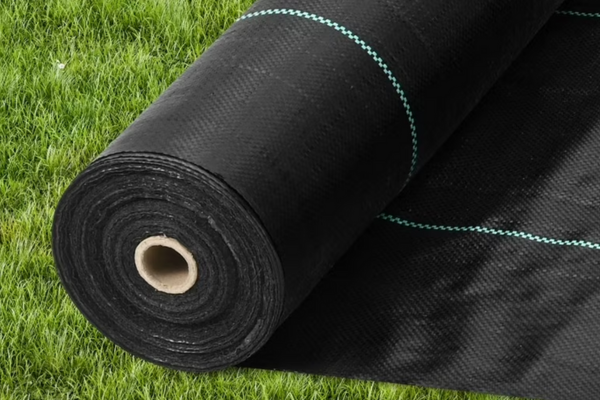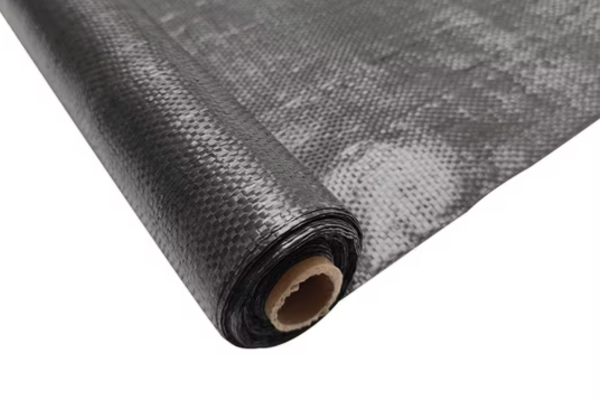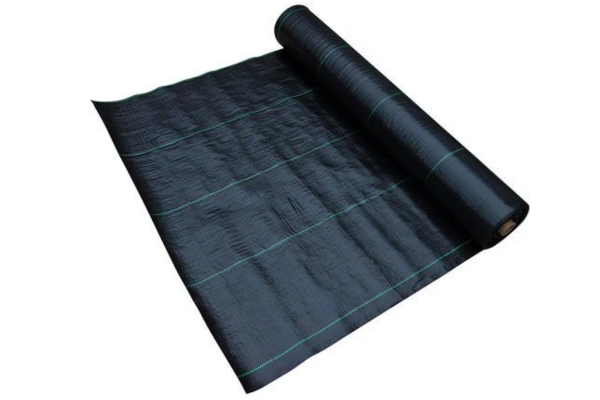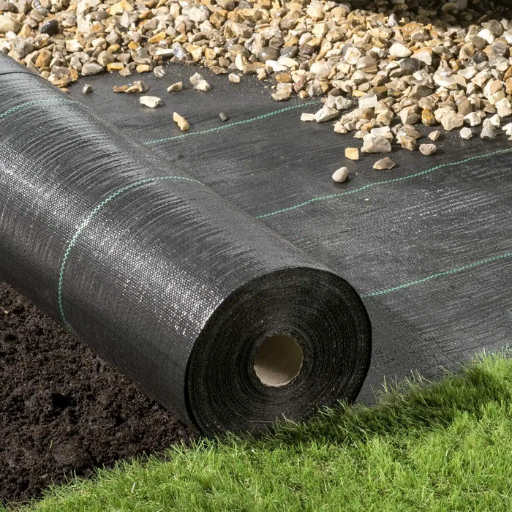
An ever-confronting challenge that makes keeping your garden and landscape beautiful and healthy rewarding is the unwanted weed. These invasive […]
Woven Geotextiles is one of many manufacturers and suppliers of woven geotextiles in China. Its products for the construction and environmental sectors are dependable and of the highest quality. The durability, strength, and expert craftsmanship of Woven Geotextiles surpass industry standards. Woven Geotextiles ensures operational effectiveness and utmost customer satisfaction. Rely on Woven Geotextiles for ever-changing applications and renowned solutions tailored toward carefully defined preferences and needs.

Materials that utilize interwoven synthetic fibers to provide strength and stability are known as woven geotextiles. These products enable enhanced soil reinforcement by improving drainage and erosion control. They offer durability, flexibility, and most importantly, reliability, which are essential qualities for construction, landscaping, and environmental projects.
Woven geotextiles have the key advantages of high strength, good stability, and versatility, making them suitable for various applications. They are able to effectively reinforce the soil and provide good long-term performance.
Provides robust tensile strength for effective soil stabilization in construction projects.
Facilitates efficient water flow, reducing hydrostatic pressure in landscaping applications.
Ensures long-term ground support and prevents erosion in various environmental conditions.
Offers sustainable, long-lasting performance with minimal environmental impact.

Ideal for light to medium stabilization, this fabric provides a grab tensile strength of 150 lbs, perfect for soil separation and basic erosion control on driveways and pathways.

With a 200 lbs grab tensile strength, this versatile fabric excels in road stabilization, aggregate separation, and light construction projects, ensuring long-lasting performance.

Offering a robust 250 lbs grab tensile strength, this option is suited for unpaved roads, rip rap support, and areas requiring enhanced stabilization under heavier loads.

Our strongest fabric with a 315 lbs grab tensile strength, ideal for demanding road construction, embankment support, and heavy-duty erosion control projects.
| Parameter Name | Example Value | Units | Notes / Description |
|---|---|---|---|
| Tensile Strength (MD / Warp) | 100 | kN/m | Ultimate Strength in Machine Direction |
| 6850 | lbs/ft | ||
| Tensile Strength (CD / Weft) | 90 | kN/m | Ultimate Strength in Cross Direction |
| 6165 | lbs/ft | ||
| Elongation (MD / Warp) | 15 | % | % Strain at Break in Machine Direction |
| Elongation (CD / Weft) | 18 | % | % Strain at Break in Cross Direction |
| CBR Puncture Resistance | 3000 | N | Resistance to localized puncture load (e.g., from aggregate) |
| 675 | lbs | ||
| Apparent Opening Size (AOS) | 0.3 | mm | Max particle size retained (O95) - e.g., Sieve No. 50 |
| 50 | Sieve No. | ||
| Permittivity | 0.35 | s?1 | Water flow rate perpendicular to plane |
| Mass Per Unit Area | 250 | g/m2 | Weight of the fabric |
| 7.4 | oz/yd2 | ||
| Material Type | Polypropylene (PP) | N/A | Polymer used for the fabric |
| UV Resistance (500 hrs) | 70 | % Retained | Minimum % strength retained after standard UV exposure |
| Roll Width | 4.5 | m | Standard roll width |
| 14.8 | ft | ||
| Roll Length | 100 | m | Standard roll length |
| 328 | ft |
Affordability: Sourcing directly from our production facility reduces overhead, offering budget-friendly pricing.
Superior Quality Control: On-site manufacturing ensures meticulous standards, delivering reliable strength and longevity.
Tailored Solutions: As producers, we provide customizable options, adapting fabrics to meet unique project demands.
Swift Delivery: In-house processing eliminates external delays, ensuring prompt production and shipping.
Expert Guidance: Our team offers professional advice and employs cutting-edge methods to boost geotextile performance.

Understand from our clients what they say about doing business with us and the unique value addition we provide.



A woven geotextile is a planar textile material manufactured by the regular interlacing of two or more sets of threads or filaments. These threads are typically made from synthetic polymers like polypropylene or polyester, creating a stable fabric used in various civil engineering and construction applications for functions like separation, reinforcement, filtration, and drainage.
Yes, water generally passes through woven geotextiles. They are specifically designed to be permeable, allowing water to flow through the fabric while simultaneously retaining soil particles. This permeability is a crucial characteristic for their use in drainage, filtration, and separation applications within civil engineering projects.
Geotextile fabric can clog, although proper material selection based on soil conditions aims to minimize this risk. Clogging occurs when fine soil particles accumulate within the fabric’s pore structure over time, reducing its permeability. Selecting a geotextile with appropriate filtration properties for the specific soil is vital to maintain long-term drainage and filtration effectiveness and prevent clogging.
No, standard woven geotextiles are not used for waterproofing. Geotextiles are designed to be permeable and allow water to pass through them, serving functions like filtration and drainage. Waterproofing requires an impermeable barrier, which is typically achieved using geomembranes or other non-permeable materials specifically engineered to block the passage of water completely.
The lifespan of geotextile fabric varies significantly depending on the material composition (e.g., polypropylene, polyester), the environmental conditions (UV exposure, chemical agents, soil pH), and whether it is buried. When properly installed and buried away from UV light, geotextiles made from durable polymers can last for many decades, often exceeding fifty years in suitable conditions.
Yes, facilitating water drainage is one of the primary functions of woven geotextiles. They are engineered with specific pore sizes and permeability characteristics that allow water to pass through the fabric efficiently while preventing the migration of surrounding soil particles. This makes them essential components in drainage systems, erosion control, and filtration applications.
The thickness of woven geotextile varies widely depending on its strength, material, and intended application. Unlike non-woven geotextiles which can be quite bulky, woven geotextiles tend to be relatively thin, typically ranging from less than 1 millimeter to potentially a few millimeters thick. Engineers often specify woven geotextiles more by their tensile strength and permeability rather than just thickness.
Maintain Inventiveness by Following The Blog for the Latest Best Practices, Techniques, Innovations, and Insights in the Field.
An ever-confronting challenge that makes keeping your garden and landscape beautiful and healthy rewarding is the unwanted weed. These invasive […]
In construction projects, storm water runoff, and industrial sectors, managing sediment and pollutants is a top priority for environmental regulation […]
High-density polyethylene (HDPE) geomembrane liners are now inseparable from various industries. Their properties have been unmatched with durability, chemical resistance, […]
The recasting of infrastructure relies on invention, precision, and sustainability where civil and environmental engineering maintain the social networks, transportation, […]
High-Density Polyethylene (HDPE) geomembranes are used in a variety of industries for which utmost resilience, flexibility, and environmental protection are […]
The trees’ health and longevity depend on the care given, and this includes trees found in the backyard or a […]
Taking care of young trees is very important to nurture a healthy and thriving outdoor space. But, when the bark […]
Mechanically Stabilized Earth (MSE) retaining walls represent a major upgrade in the world of modern construction and infrastructure. These innovative […]
Build strong, stable infrastructure with Woven Geotextiles. These high-strength fabrics provide essential reinforcement, effective filtration, and reliable erosion control for roads, foundations, and drainage systems. Ensure long-term performance and durability in demanding civil applications. Overcome soil challenges with a proven solution. Explore our range or request a quote for Woven Geotextiles today!
A: A woven geotextile is a permeable textile material made from interlaced synthetic fibers, typically used for separation, reinforcement, filtration, or erosion control. It is distinctly different from a geomembrane (sometimes loosely referred to as a geotextile membrane), which is an impermeable liner used for containment or waterproofing applications, blocking water flow entirely.
A: Woven geotextile fabric is widely used in civil engineering and construction. Common applications include stabilizing subgrades in roads, railways, and platforms; providing a separation layer between different soil types; reinforcing embankments and retaining walls; and controlling erosion on slopes and shorelines by holding soil in place.
A: Woven geo fabric significantly improves the performance and lifespan of pavements by providing a strong separation layer between the aggregate base course and the underlying soft subgrade soil. This prevents the intermixing of materials, which causes rutting and reduces structural integrity, thereby maintaining the load-bearing capacity of the pavement over time.
A: Woven geofabric is commonly manufactured from high-strength synthetic polymers such as polypropylene (PP) or polyester (PET). These materials are chosen for their excellent tensile strength, durability, resistance to biological degradation, and chemical stability, which allows the fabric to withstand harsh ground conditions and applied stresses effectively.
A: Finding a reliable distributor for woven geotextile involves researching established geosynthetic suppliers. Look for companies with a strong reputation in the civil engineering sector, who offer a wide range of products meeting relevant industry standards and can provide technical support, material specifications, and logistical capabilities suitable for large-scale project needs.
A: Polypropylene woven geotextile is favored for its high tensile strength-to-weight ratio, excellent resistance to acids and alkalis commonly found in soils, and cost-effectiveness. Its durability and structural properties make it an ideal choice for reinforcement and separation applications in various infrastructure projects, ensuring long-term performance.
A: A woven fabric geotextile is typically preferred when the primary function is high-strength reinforcement or separation under significant load-bearing requirements, such as reinforcing road bases or supporting heavy fills. Non-woven geotextiles, with their felt-like structure, are generally better suited for filtration and drainage applications due to their higher permeability and thickness.
A: Woven geotextile fabric permeability measures the rate at which water can pass through the fabric. It’s crucial for applications requiring drainage or filtration, as the fabric must allow water to flow freely to prevent hydrostatic pressure build-up while effectively retaining surrounding soil particles to maintain structural stability and prevent clogging of drainage systems.